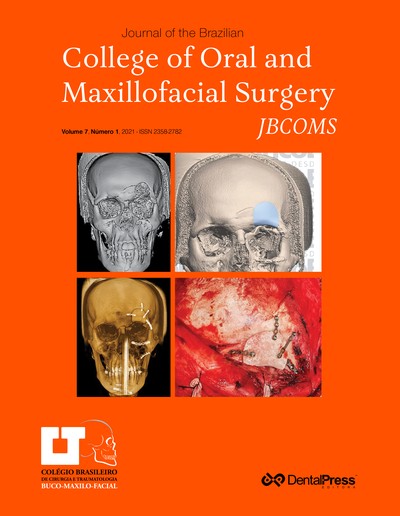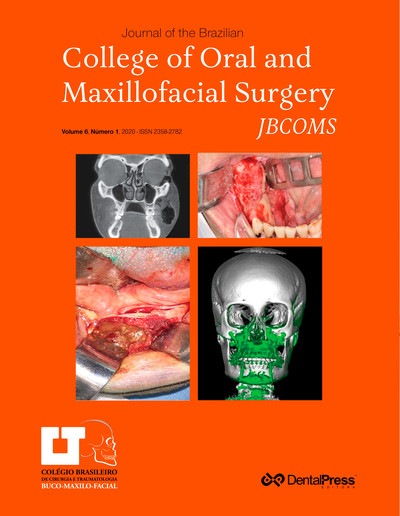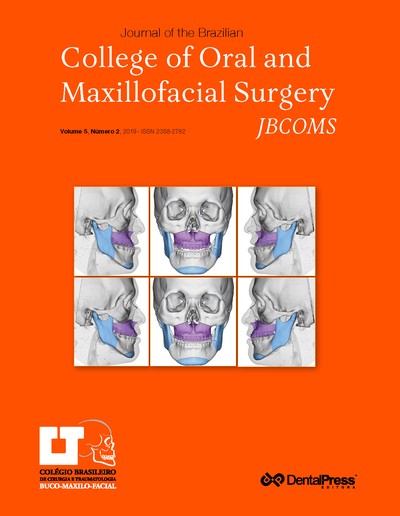
Assessment of craniometric points in Class III patient profile radiographs and their relationship with natural head position
Niedja Ramos de Lima, Emerson Filipe De Carvalho Nogueira, Danilo De Moraes Castanha, José Rodrigues Laureano Filho
Introduction: Cephalometry plays an important role in the planning of orthognathic surgeries. However, it is susceptible to variations in the Natural Head Position (NHP), condition that may impair planning and results. Objective: To evaluate the NHP of Class III patients during cephalometric measurements, with the aim of verifying possible changes in position and angulation of their craniometric points. Methods: Nine patients in the NHP were subjected to photographic records. Then, cephalometric tracings were superimposed on the photographs in a 1:1 ratio. After the superposition, six points were delimited (glabella, pronasale, subnasale, upper lip, lower lip and soft tissue pogonion), and the distances between points in the two images were measured and evaluated through statistical analysis. Results: All craniometric cephalometric points were divergent from the photographs, with linear changes in cephalometric points ranging from 1 to 16 mm and angular changes from -1° to -9°. Women showed greater disparity as well as taller patients demonstrated greater position variation. Conclusion: All patients presented head position variation during cephalometric measurements and the inclination was higher in women and in the taller patients, and the size of the mandibular protrusion did not influence the degree of inclination.
Keywords: Orthognathic surgery. Cephalometry. Angle Class III malocclusion.
How to cite: Lima NR, Nogueira EFC, Castanha DM, Laureano Filho JR. Assessment of craniometric points in Class III patient profile radiographs and their relationship with natural head position. J Braz Coll Oral Maxillofac Surg. 2019 Jan-Apr;5(1):30-5. DOI: https://doi.org/10.14436/2358-2782.5.1.030-035.oar
Monday, May 13, 2024 04:37










